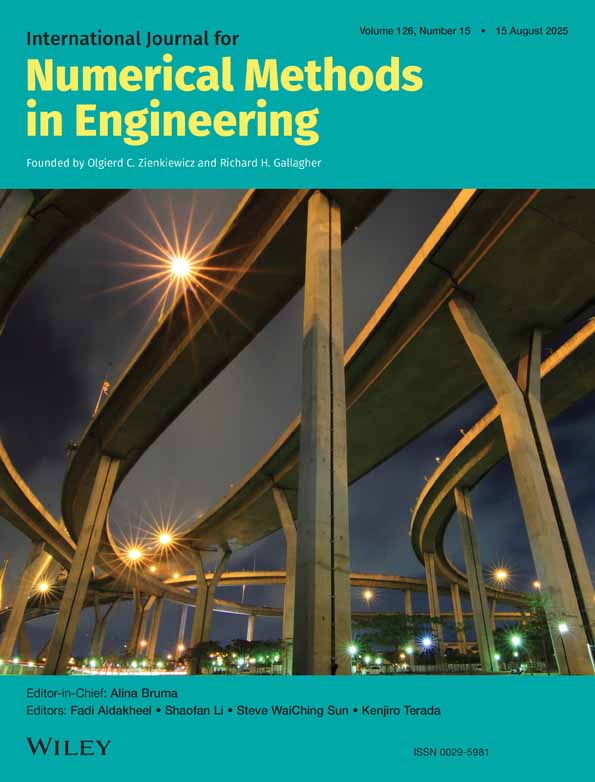Numerical modeling of projectile penetration into compressible rigid viscoplastic media
Abstract
We develop computational methods for modeling penetration of a rigid projectile into porous media. Compressible rigid viscoplastic models are used to capture the solid–fluid transition in behavior at high strain rates and account for damage/plasticity couplings and viscous effects that are observed in geological and cementitious materials.
A hybrid time discretization is used to model the non-stationary flow of the target material and the projectile–target interaction, i.e. an explicit Euler method for the projectile equation and a forward (implicit) method for the target boundary value problem. At each time step, a mixed finite element and finite-volume strategy is used to solve the ‘target’ boundary value problem. Specifically, the non-linear variational inequality for the velocity field is discretized using the finite element method while a finite-volume method is used for the hyperbolic mass conservation and damage evolution equations. To solve the velocity problem, a decomposition–coordination formulation coupled with the augmented Lagrangian method is adopted.
Numerical simulations of penetration into concrete were performed. By conducting a time step sensitivity study, it was shown that the numerical model is robust and computationally inexpensive. For the constants involved in the model (shear and volumetric viscosities, cut-off yield limit, and exponential weakening parameter for friction) that cannot be determined from data, a parametric study was performed. It is shown that using the material model and numerical algorithms that developed the evolution of the density changes around the penetration tunnel, the shape and location of the rigid/plastic boundary, the compaction zones, and the extent of damage due to air-void collapse are described accurately. Copyright © 2007 John Wiley & Sons, Ltd.




